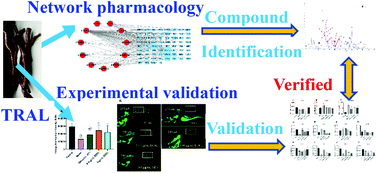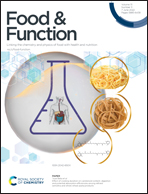Anti-osteoporosis effects and regulatory mechanism of Lindera aggregata based on network pharmacology and experimental validation
Abstract
Osteoporosis (OP) is characterized by the flaccidity of bones or bone bi-disease caused by kidney deficiency. Lindera aggregate has been used to strengthen kidney function in China for thousands of years. It has been approved by Chinese Pharmacopoeia that the root of Lindera aggregata (RLA) can replenish and tonify the kidney, which is thought to be an effective way to alleviate OP. In this study, a network pharmacology approach was applied to explore the active components and potential mechanisms of RLA in osteoporosis treatment. Then, the ethanolic extract of the root of L. aggregata (EERL) was prepared and these predicted results were validated by prednisone-induced zebrafish embryos model. Moreover, the candidate compounds were identified by UPLC-ESI-MS/MS. The anti-OP results showed that EERL could significantly reverse the bone loss of zebrafish induced by prednisone. The mRNA expressions results showed that EERL decreased osteoclast bone resorption by regulating the RANK/RANKL/OPG system. Also, it increased bone formation by regulating the gene expressions of spp1, mmp2, mmp9, runx2b, alp, and entpd5a. Our results demonstrated the reliability of the network pharmacology method, and also revealed the anti-OP effect and potential mechanism of RLA.


 Please wait while we load your content...
Please wait while we load your content...